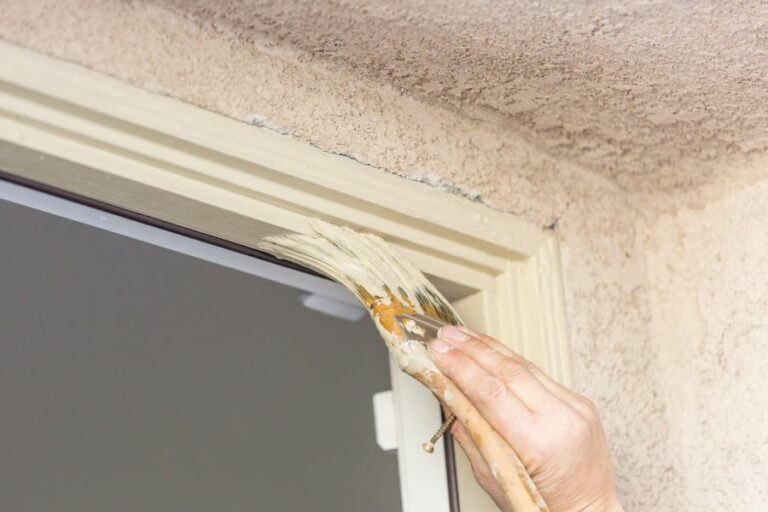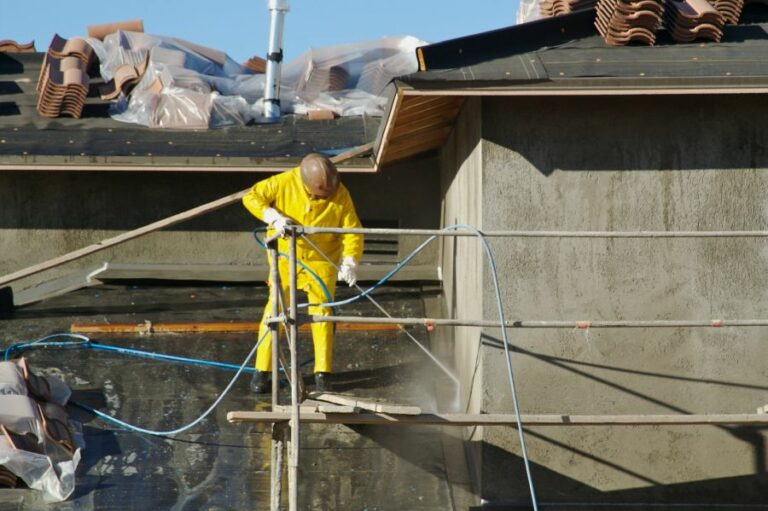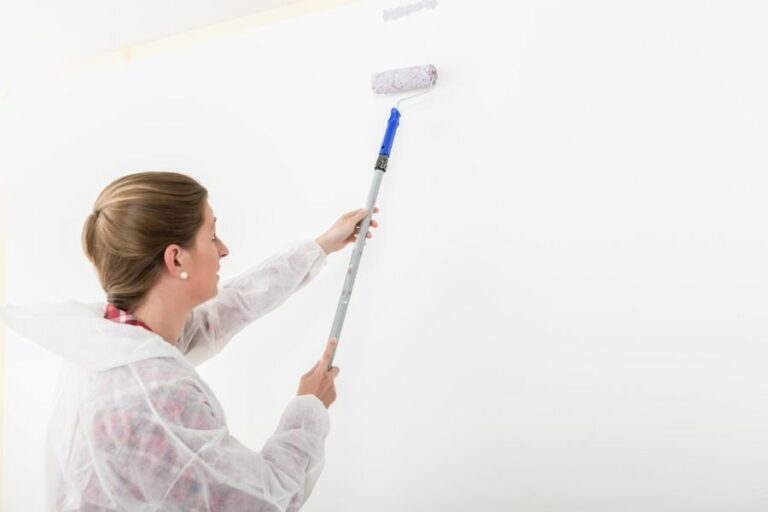Using Wire Brushes To Remove Dirt And Debris From Surfaces
Are you tired of struggling to remove stubborn dirt and debris from various surfaces? We are here to introduce you to the effective and versatile solution you’ve sought: wire brushes. These handy tools promise to make cleaning tasks easier, saving time and effort. In the article, we’ll walk you through choosing the right type of wire brush, best practices, and tips to achieve superior cleaning results.
Using wire brushes to remove dirt and debris from surfaces:
Wire brushes are versatile tools for cleaning, maintenance, and restoration, effectively removing dirt, rust, paint, and debris from metal, wood, and concrete surfaces. Available in various types and materials, the right wire brush choice depends on the specific task and surface. Proper safety gear, technique, and maintenance are essential for optimal results.

Want to know the secret to effectively removing dirt and debris from surfaces? Look no further! Our guide to using wire brushes will provide you with pro tips and techniques for achieving optimal cleaning results. Read on to uncover the true potential of these versatile tools!
Contents
- 1 Eliminating Dirt and Debris from Surfaces with Wire Brushes
- 2 Is a Wire Brush Effective for Dirt Removal?
- 3 Different Brush Varieties for Surface Dirt Removal
- 4 Various Cleaning Applications of Wire Brushes
- 5 The Ideal Brush for Dislodging Dirt on Rough Surfaces
Eliminating Dirt and Debris from Surfaces with Wire Brushes
Wire brushes are an essential tool in various cleaning, maintenance, and restoration tasks. They are highly effective in removing dirt, rust, paint, and other debris from surfaces like metal, wood, concrete, and more.
• Types of Wire Brushes and Their Applications
There are different types of wire brushes available on the market, each designed for specific tasks. Knowing the distinctions between them can help you choose the right tool for your cleaning needs.
– Handheld Wire Brushes
Handheld wire brushes are the simplest and most common type. They are convenient for small-scale cleaning tasks and can be used manually, providing great control and precision. Examples include the stainless steel wire brush and the brass wire brush.
– Wire Cup Brushes
Wire cup brushes are designed for use with angle grinders, drills, or die grinders. They are ideal for cleaning larger surfaces, especially where there is severe corrosion, paint, or rust. These brushes are available in various materials like brass, stainless steel, and carbon steel.
– Wire End Brushes
Wire end brushes are ideal for getting into tight, narrow spaces or corners. They are typically used with drills or die grinders and come in various shapes like cylindrical, pointed, and ball-shaped.
– Wire Wheel Brushes
Wire wheel brushes have a wheel-like design and can be used with bench grinders, angle grinders, or drills. They are versatile tools that can be used for cleaning, deburring, and polishing a broad range of surfaces.
• Wire Brush Material Selection: Choosing the Right Material for the Job
The effectiveness of a wire brush depends largely on its material. Different materials have unique properties, and selecting the correct one for your task ensures optimal results.
– Stainless Steel Wire Brushes
Stainless steel wire brushes are ideal for cleaning metal surfaces, especially stainless steel and aluminum, without leaving deposits that could cause rust later. They are resistant to corrosion and do not generate sparks, making them suitable for hazardous environments.
– Brass Wire Brushes
Brass wire brushes are softer than steel brushes, making them perfect for cleaning sensitive surfaces like brass, copper, aluminum, or wooden surfaces. Their non-sparking properties also make them suitable for use in hazardous environments.
– Carbon Steel Wire Brushes
Carbon steel wire brushes are the most aggressive, offering excellent cleaning power for removing rust, paint, and heavy debris from surfaces like iron and steel.
• Best Practices for Using Wire Brushes
– Safety First
Ensure you wear proper safety gear, including gloves and eye protection when using a wire brush. For power-driven brushes, ensure that the wire brush is securely fixed and operates at the appropriate speed.
– Correct Technique
Use the brush in a consistent sweeping motion to prevent damaging the surface or the brush itself. Do not apply excessive pressure, as this can lead to wire breakage or surface gouging.
– Regular Inspection
Inspect your brush for wear and damage regularly. Replace worn-out brushes to avoid accidents or poor cleaning results.
– Adequate Ventilation
When using wire brushes indoors, make sure the area is well-ventilated to disperse dust and debris.
• Maintenance and Storage of Wire Brushes
To prolong the life of your wire brush, clean it after each use, and store it in a dry, covered place to avoid rust and corrosion. Regularly inspect your brush for signs of wear and damage, and replace it when necessary.
• Conclusion
Wire brushes are indispensable tools for removing dirt and debris effectively from various surfaces. By understanding the different types, materials, and applications, you’ll be well-equipped to choose the right wire brush for your cleaning project.
Always prioritize safety and employ the proper techniques to achieve the best results.
Is a Wire Brush Effective for Dirt Removal?
Cleaning various surfaces can often be a challenging task. There are several tools available on the market for removing dirt, grime, and other debris. One of these tools is the wire brush. But can a wire brush effectively remove dirt from a surface?
• Understanding Wire Brushes
A wire brush is a common cleaning tool that consists of a handle and bristles made from metal wires, such as steel, brass, or stainless steel. The bristles are typically stiff and strong, which helps dislodge dirt, rust, paint, and other materials from surfaces.
Wire brushes come in various shapes and sizes, with options like handheld brushes, circular brushes that can be attached to power tools, or wheel brushes for use with bench grinders. The choice of wire brush type and bristle material depends on the specific cleaning task and the surface being cleaned.
• How to Use a Wire Brush for Dirt Removal
Before using a wire brush to remove dirt, it’s crucial to wear appropriate safety gear. This may include gloves, safety glasses, and long sleeves, as the metal bristles can cause injury if not handled properly.
Using a wire brush for dirt removal involves applying pressure to the surface while brushing back and forth in a consistent manner. Adjusting the angle of the brush and varying the pressure can help ensure that dirt is effectively removed from the surface.
When using a wire brush attachment for a power tool, ensure that the tool is set to a safe speed and follow the manufacturer’s instructions for proper use. Power tools can significantly increase the cleaning power of a wire brush, allowing for more efficient dirt removal.
• Effectiveness of Wire Brushes for Dirt Removal on Various Surfaces
– Metal Surfaces
One of the primary uses for wire brushes is to clean metal surfaces. The stiff bristles of a wire brush work well to remove dirt, rust, and other debris from metal surfaces, including tools, machinery, and automotive parts.
I recommend using a stainless steel or brass wire brush on metal surfaces to avoid scratching or damaging the surface. When used appropriately, a wire brush can be a highly effective tool for removing dirt from metal surfaces.
– Concrete and Masonry Surfaces
Wire brushes can also be used to clean dirt and grime from concrete and masonry surfaces. This includes outdoor areas like driveways, sidewalks, and patios. The stiff bristles of a wire brush can effectively remove dirt and stains from these surfaces, leaving them looking cleaner and brighter.
For large areas or heavily soiled surfaces, you may find it helpful to use a power tool attachment with a circular wire brush. This can provide a more thorough and efficient cleaning compared to manual scrubbing with a handheld brush.
– Wood Surfaces
Though a wire brush can remove dirt from wood surfaces, you should proceed with caution. The aggressive bristles of a wire brush can damage the wood by causing scratches or gouges.
If you decide to use a wire brush on wood, I recommend opting for a brass-bristle brush, as it’s less likely to cause damage compared to steel bristles. Also, apply light pressure and test on a small, inconspicuous area first to minimize the risk of damage to the wood surface.
• The Limitations of Wire Brushes for Dirt Removal
While wire brushes are versatile and powerful cleaning tools, they may not always be the best choice for dirt removal. Wire brushes are most effective for removing heavy dirt and grime, but they can also be too abrasive for some surfaces.
For delicate surfaces like glass, plastics, or painted surfaces, a wire brush may cause more harm than good. In these cases, consider using a gentler cleaning tool like a cloth, sponge, or a non-abrasive brush.
• Final Thoughts
In conclusion, a wire brush can be an effective tool for removing dirt from various surfaces, including metal, concrete, and masonry, when used correctly. However, it’s important to remember that aggressive wire brushes can cause damage to delicate surfaces.
Always use caution and test on small, inconspicuous areas before using a wire brush on new surfaces, and consider alternative tools when dealing with sensitive materials.
Different Brush Varieties for Surface Dirt Removal
Every household, commercial space, or workplace has diverse cleaning requirements. For the effective removal of dust, debris, and dirt from various surfaces, using the right type of brush is essential.
• Soft Bristle Brushes
Soft bristle brushes are known for their gentle touch on delicate surfaces. As the name suggests, they have soft and flexible bristles made from natural or synthetic materials like horsehair, goat hair, or nylon. These brushes are perfect for cleaning:
- Glass and mirrors
- Fine crystalware
- Delicate upholstery
- Artwork
- Fragile collectibles
• Medium Bristle Brushes
Medium bristle brushes offer a more robust cleaning solution than soft bristle brushes but are still gentle enough not to damage surfaces. These brushes come with moderate firmness, typically made from materials like tampico or polypropylene bristles. Some of their recommended uses include:
- Tile and grout cleaning
- Bathroom surfaces
- Stainless steel
- Stone countertops
- Wood furniture
- Synthetic upholstery
• Hard Bristle Brushes
When it comes to stubborn dirt, grime, and heavy build-up, a hard bristle brush is the right choice. These brushes consist of stiff bristles, such as nylon, polypropylene or natural fiber, to provide the required abrasive action to clean surfaces effectively. They are suitable for:
- Concrete flooring
- Outdoor patio settings
- Grill grates
- Carpets with excessive dirt
- Heavy machinery
However, caution is advised while using these brushes on delicate surfaces to prevent damage.
• Wire Brushes
Wire brushes are specifically designed for removing rust, paint, or scale from metal surfaces. They come with stiff, metal bristles, typically made from brass, bronze, stainless steel, or carbon, which provide aggressive scrubbing action against tough grime and corrosion. They are perfect for cleaning:
- Metal tools and equipment
- Vehicle parts
- Rusty garden furniture
- Outdoor grills
- Pipes and wall fittings
It is essential to choose the appropriate wire brush material depending on the metal surface being cleaned to avoid scratching and damage.
• Bottle Brushes
Cleaning narrow and hard-to-reach areas like tubes, cylinders, and bottles can be challenging. Bottle brushes are designed with long, slender bristles and a flexible handle for maneuverability. These brushes come in varying bristle stiffness, depending on the required cleaning action, and can be used on:
- Bottles and glassware
- Sinks and drains
- Pipes and tubes
Some bottle brushes also feature bristle loops or sponge tips for thorough cleaning of narrow and curved surfaces.
• Scrub Brushes
Scrub brushes are designed with sturdy, easy-to-grip handles for a comfortable hold while cleaning. They are typically square or rectangular in shape, with fairly stiff bristles for added scrubbing power. These brushes are ideal for:
- Floors and carpets
- Bathroom surfaces
- Kitchen counters
- Stove tops and ovens
Depending on the bristle hardness, these brushes can be used for light to heavy-duty cleaning tasks.
• Toothbrush-Style Brushes
These small-sized brushes resemble a toothbrush and are perfect for precision cleaning and reaching tight spaces. They are available in varying bristle stiffness to tackle different cleaning requirements. Common applications include:
- Electronics and keyboards
- Jewelry
- Small parts and components
- Gaps and crevices in devices
Toothbrush-style brushes are an excellent choice for detailed cleaning tasks or handling intricate objects that require precision.
• Anti-Static Brushes
Anti-static brushes are designed to dissipate electrostatic charges while cleaning sensitive electronic components and devices. They come with bristles made from conductive materials or have a conductive grip to prevent the build-up of static electricity during cleaning. These brushes are primarily used for:
- Circuit boards
- Electronic equipment
- Computer hardware
The National Institute of Standards and Technology (NIST) provides guidelines for the proper use of anti-static brushes to avoid damage to electronic devices.
In conclusion, understanding the various types of brushes available and their applications for removing dirt from surfaces is crucial for efficient and damage-free cleaning. Having a collection of these brushes readily available can make cleaning tasks easier and more effective.
By selecting the appropriate brush for each specific task, users can achieve optimal results and help maintain the overall cleanliness and longevity of their space.
Type of Brush | Description |
|---|---|
Scrub Brush | Sturdy brush with stiff bristles, used for scrubbing tough dirt and grime from various surfaces |
Wire Brush | A brush with thin metal bristles, typically used for cleaning metal surfaces or removing rust and paint |
Nylon Brush | A brush made with synthetic nylon bristles, often used for gentle cleaning of delicate surfaces like upholstery or carpets |
Horsehair Brush | A brush made with natural horsehair bristles, suitable for cleaning fragile or sensitive surfaces like leather or wood |
Toothbrush | A small brush with fine bristles designed for cleaning teeth, often repurposed for cleaning small, hard-to-reach areas |
Various Cleaning Applications of Wire Brushes
Wire brushes are versatile and essential tool in various cleaning situations and environments. Their bristles, made of strong and durable metal, are perfect for cleaning surfaces that are otherwise difficult to clean with regular brushes or cloth.
• Surface Preparation and Rust Removal
One of the most common uses of wire brushes is for preparing surfaces before painting, refinishing, or repairing them. These brushes effectively remove dust, dirt, peeling paint, and rust, creating a smooth and clean surface for further treatment.
Additionally, wire brushes can be used to clean and smoothen the edges of metal objects, making them safer for handling.
I recommend using a wire brush with stiff bristles for this purpose, as softer bristles may not effectively remove stubborn debris. For larger surfaces, consider using a wire wheel attachment for your drill or grinder.
• Grill and Barbecue Cleaning
Wire brushes are especially useful for cleaning grills and barbecues after cooking. Due to the high cooking temperatures, food residues can become stuck and harden on the grill grates.
A wire brush can save you a lot of time and effort in this situation, effortlessly removing the burned-on residues and returning your grill to a clean and safe state.
Choosing a wire brush specifically designed for this task is essential, as these brushes often have special features, such as a scraper or an ergonomic handle, which make the cleaning experience easier and more efficient. For safety reasons, always ensure that your grill is switched off and cool before cleaning.
• Cleaning Fireplace and Chimney
A wire brush is an indispensable tool for maintaining your fireplace and chimney. Soot, creosote, and debris can accumulate inside the chimney over time, posing a serious fire hazard. Regular cleaning with a wire brush can help prevent this hazard and ensure the safe operation of your fireplace.
While a DIY approach can be taken, it is often best to consult with a professional chimney sweeper for optimal results and safety.
For maintaining fireplace doors and grates, use a smaller wire brush to get into the hard-to-reach areas and remove any ash or soot that may have built up. Remember to wear appropriate protective equipment, such as gloves and safety goggles, during any chimney cleaning activities.
• Garden and Horticulture
Wire brushes are an excellent tool for garden enthusiasts looking to maintain their tools and garden structures. By effectively removing rust, dirt, and algae, wire brushes make sure that your garden tools perform optimally and that your garden ornaments retain their beauty.
When cleaning garden tools, select a wire brush with stiff bristles, as these will provide the best results in terms of rust and dirt removal. To ensure the longevity of wooden structures and ornaments, consider using a brass wire brush to avoid damaging the wood surface.
• Automotive Maintenance
Wire brushes have numerous applications in the automotive field. They are commonly used for cleaning battery terminals, removing rust, paint, and dirt from metal parts, and maintaining the undercarriage of vehicles.
Using a wire brush in conjunction with an appropriate cleaning solution can significantly improve the effectiveness of the cleaning process.
I recommend using a wire brush with soft bristles for delicate surfaces, such as aluminum or chrome parts, to avoid causing damage. Always remember to wear appropriate protective equipment, such as gloves and safety goggles, during any automotive maintenance activities.
• Conclusion
To summarize, wire brushes are an invaluable asset in numerous cleaning scenarios. From surface preparation and rust removal to grill and fireplace maintenance, garden care, and automotive cleaning, the uses of wire brushes are extensive and varied.
By selecting a wire brush with the appropriate bristle stiffness and design features, you can tackle any cleaning challenge with ease and professionalism.
Item/Object | Description |
|---|---|
Grill grates | Wire brushes are great for removing stubborn food and grease from grill grates. |
Rust and paint | A wire brush can be used to clean and remove rust and paint from metal surfaces. |
Tools and equipment | Wire brushes can be helpful in cleaning dirt, grease, and rust off of tools and other equipment. |
Garden tools | Use a wire brush to clean soil and dirt from garden tools like shovels or rakes. |
Car parts | Auto mechanics often use wire brushes to clean and maintain engine and suspension components. |
Pipes and tubes | Wire brushes are helpful in cleaning clogged or dirty pipes, tubes, and other plumbing fixtures. |
Outdoor furniture | Wire brushes can be used to clean and maintain outdoor metal furniture, including the removal of rust and dirt buildup. |
The Ideal Brush for Dislodging Dirt on Rough Surfaces
• Importance of the Right Brush Material
Selecting the proper brush for cleaning rough surfaces is crucial for effective dirt removal and maintaining the integrity of the surface. The right brush will ensure optimal cleaning performance and minimize any potential damage to the cleaned surface.
Additionally, using an appropriate brush can prolong its lifespan, preventing frequent replacements and saving time and money. One highly recommended material for such brushes is Tampico fiber, a natural and versatile option that is well-suited for cleaning various rough surfaces.
• Tampico Fiber: An Excellent Choice
Derived from the Agave plant, Tampico fiber is a natural, durable, and abrasive material perfect for cleaning rough surfaces. The fiber’s stiffness and resistance to water, chemicals, and heat make it an ideal choice for a wide range of cleaning applications, including scrubbing wood, concrete, and brick.
Additionally, Tampico fiber is highly absorbent, allowing it to hold onto cleaning solutions and facilitate improved cleaning efficacy.
– Benefits of Tampico Fiber Brushes
There are several benefits to using a Tampico fiber brush for cleaning rough surfaces, including:
- Durability: Tampico fibers are highly resistant to wear and tear, making them long-lasting compared to synthetic alternatives.
- Compatibility: These fibers are compatible with most cleaning solutions, including water, detergents, and solvents.
- Environmentally Friendly: Being a natural material, Tampico fiber is biodegradable and has a lower environmental impact than synthetic options.
- Versatility: Tampico fibers can be mixed with other materials, such as polypropylene or horsehair, to create brushes with varying stiffness levels for different cleaning applications.
The American Brush Manufacturers Association recommends Tampico fiber brushes for various cleaning purposes, including rough surface cleaning.
• Brush Shape and Size Considerations
In addition to selecting the appropriate brush material, the shape and size of the brush head are important factors in achieving optimal cleaning results.
Brushes with tapered heads can significantly improve access to tight, hard-to-reach spots, while others with oversized heads might cover a larger surface area with each stroke.
– Recommendations for Different Scenarios
For specific cleaning scenarios, consider the following recommendations:
- Outdoor Surfaces: A large Tampico fiber brush with an extended handle ensures efficient cleaning of decks, walkways, or patio furniture while reducing strain on the person using the brush.
- Industrial Cleaning: Smaller Tampico fiber brushes with stiff bristles are suitable for cleaning machinery, removing rust, and scrubbing concrete.
- Scrubbing Grout: Tampico fiber brushes with narrow, tapered heads can effectively clean grout lines in between tiles.
- DIY Projects: For activities like distressing wood, Tampico fiber brushes can help to provide a textured finish.
• Proper Brush Maintenance
Taking care of the brush is also crucial to maintaining its optimal performance over time. Be sure to rinse the brush thoroughly after use, removing any dirt and cleaning solution. Hang the brush in a well-ventilated area to dry, which prevents the growth of bacteria and mold.
Regular inspection of the bristles for wear and tear is also essential to determine if it is time for a replacement.
• Conclusion
In conclusion, when seeking the ideal brush for cleaning rough surfaces, consider Tampico fiber brushes for their durability, versatility, and environmentally friendly properties.
Evaluate the shape and size of the brush to select the one most suitable for the intended cleaning application. Lastly, proper brush maintenance is vital in ensuring its longevity and performance.
By following these guidelines, individuals can achieve effective dirt removal and maintain the integrity of the rough surface being cleaned.







